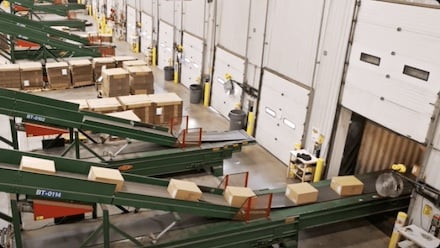Fast and accurate order fulfillment processes are essential for customer experience and sustained profitability. However, many businesses struggle with challenges that cause serious disruptions in daily operations. Some of these fulfillment challenges are common and manageable, while others might indicate that it's time to outsource or switch to a more reliable 3PL provider.
In this blog, we explore the most common challenges in the fulfillment process, how they can impact your business and when it may be time to find a better solution.
Common challenges in the order fulfillment process
Staying competitive in rapidly changing industries and marketplaces requires innovative and tech-enabled solutions. This is especially true with fulfillment, an essential part of the customer’s experience with your brand. Listed below are common challenges that can impact the process.
Inventory accuracy and stockouts
Real-time visibility of stock levels prevents overselling, stockouts and significant fulfillment delays. If your available inventory levels do not match what you actually have in stock, then you risk losing customer trust. Effective inventory management is a requirement for seamless order fulfillment.
|
|
Challenges in the order fulfillment process |
|||
| Common challenges | In-house solutions | When to outsource | ||
| 1. Inventory accuracy and stockouts |
Mismatched inventory data, manual errors |
Automate updates, audit regularly |
If your 3PL can’t provide real-time tracking or frequent reports |
|
| 2. Slow shipping and high costs |
Costly shipping, slow fulfillment |
Reconfigure layout, consolidate shipments and negotiate rates |
If your 3PL lacks preferred carrier rates or fast shipping options |
|
| 3. Returns and reverse logistics |
Slow returns, high return rates and no tracking |
Set return policies, enable tracking and improve QC |
If your 3PL doesn’t support returns or lacks tracking tools |
|
| 4. Scaling for demand spikes |
Stockouts and delays during peak |
Use forecasting tools, upgrade WMS and scale staffing |
If your 3PL can’t flex with demand or lacks automation |
|
|
5. Omnichannel fulfillment |
Inventory errors across channels |
Centralize platforms, sync systems and standardize processes |
If your 3PL can’t support real-time sync or omnichannel ops |
|
Slow shipping and high costs
Balancing customer expectations with profitability is a challenge. Customers want and expect fast and affordable shipping options, including two-day or even same-day delivery. This can create challenges involving high carrier fees, transportation costs and inconsistent shipping times.
Returns and reverse logistics
Managing returns is just as important as fulfilling new orders, especially in industries where returns are more common. The most common returns and reverse logistics challenges are associated with inefficient restocking processes and unclear return policies. Unfortunately, poor return experiences can lead to a loss of customer trust and higher operational costs.
Scaling for demand spikes
Businesses must remain flexible and scale during demand spikes while maintaining cost control and service quality. An effective fulfillment strategy should enable businesses to scale during growth, peak sales seasons and promotional events.
Omnichannel fulfillment challenges
Most modern brands sell across multiple platforms, including direct-to-customer (D2C), business-to-business (B2B), retail stores and online marketplaces. Each channel presents its own unique challenges and requirements. Omnichannel order fulfillment must integrate and deliver a consistent brand experience across all channels.
Is it time to start outsourcing or change 3PLs?
Many businesses struggle to decide whether in-house or outsourced fulfillment is best. For those already working with a provider that isn’t delivering optimal results, they might struggle to find a better way to improve outcomes.
Switching to a scalable, technology-driven fulfillment partner like Cart.com can help eliminate inefficiencies, reduce costs and ensure consistent and optimal customer experiences.
Partner with Cart.com
The best fulfillment strategies are efficient, accurate and scalable. Whether you intend to manage fulfillment in-house or outsource to a 3PL, you can overcome barriers to success.
If your current strategy is failing to deliver results, we can help. Contact our team today to learn how we can help your company navigate challenges in the order fulfillment process.
Subscribe to our emails for the latest industry insights!
By entering your email, you agree to receive marketing emails from Cart.com






